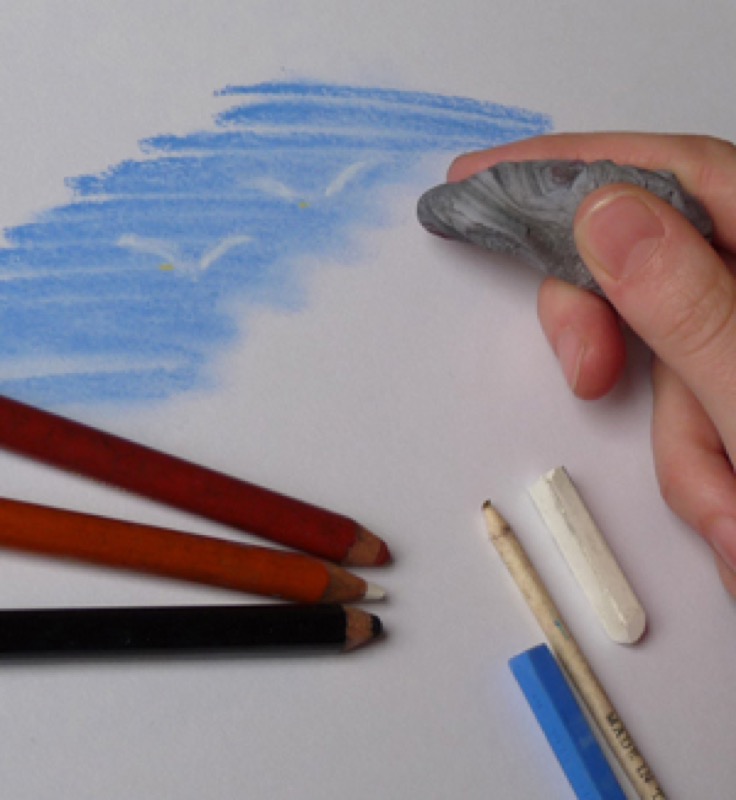You need just a few accessories to work with pastels under the right conditions. Guided tour of the pastellist's survival kit!
1. Thinners and fixatives
- White spirit and turpentine (oil pastels): for blending or correcting colors. Save used paintbrushes and rags just for this use.
- Spray fixatives (dry pastels): to reinforce the adhesion of pigments between each layer of color, keep them from mixing, and for when you've finished your piece.
Trick of the trade: Hair spray makes a good substitute for fixatives!

2. Basic tools for mixing, cutting, stumping, correcting…
2.1. Les incontournables
- Mixing and stumping tools: cotton, cotton swabs, rags, blotters, blender brushes, stumps (pointed sticks made from rolled paper)… and, of course, your hands!
- Kneaded eraser (or, failing that, some crustless bread).
- Utility knife or exacto knife (metal handle for interchangeable blades): for sharpening your sticks or reducing them to powder; for scraping off a superficial layer of color.
- Adhesive tape or drawing clips.
- Blotters and masking tape, for protecting areas where you aren't working and for defining margins.
- Tracing paper if you plan to create stencils.
- Other media: dry (charcoal for sketching) or wet (watercolor or ink for coloring the paper, gouache or acrylic for composing mixed pieces…).
- An acrylic primer for texturing the support medium or making it compatible for use with pastels. Essential for working on non-absorbent surfaces: wood, art board, high grammage papers (over 300g/m2), or linen canvas, for example
- A fine rag collection…
2.2 For pros
- A sharpener, made with wide stripes of sandpaper attached to a base for reducing your pastels to powder.
- Maulstick: this wood stick with a ball at one end is for working without resting your palm on your work.
Zoom: Your workspace
Because pastels are a pulverizing medium, you should work on them on an inclined or even vertical plane: standing easel, table top easel, or multi-directional drawing table.
Attach your work to a separate drawing board that you can turn as needed.
Recommended product:
Ingres Vidalon®
